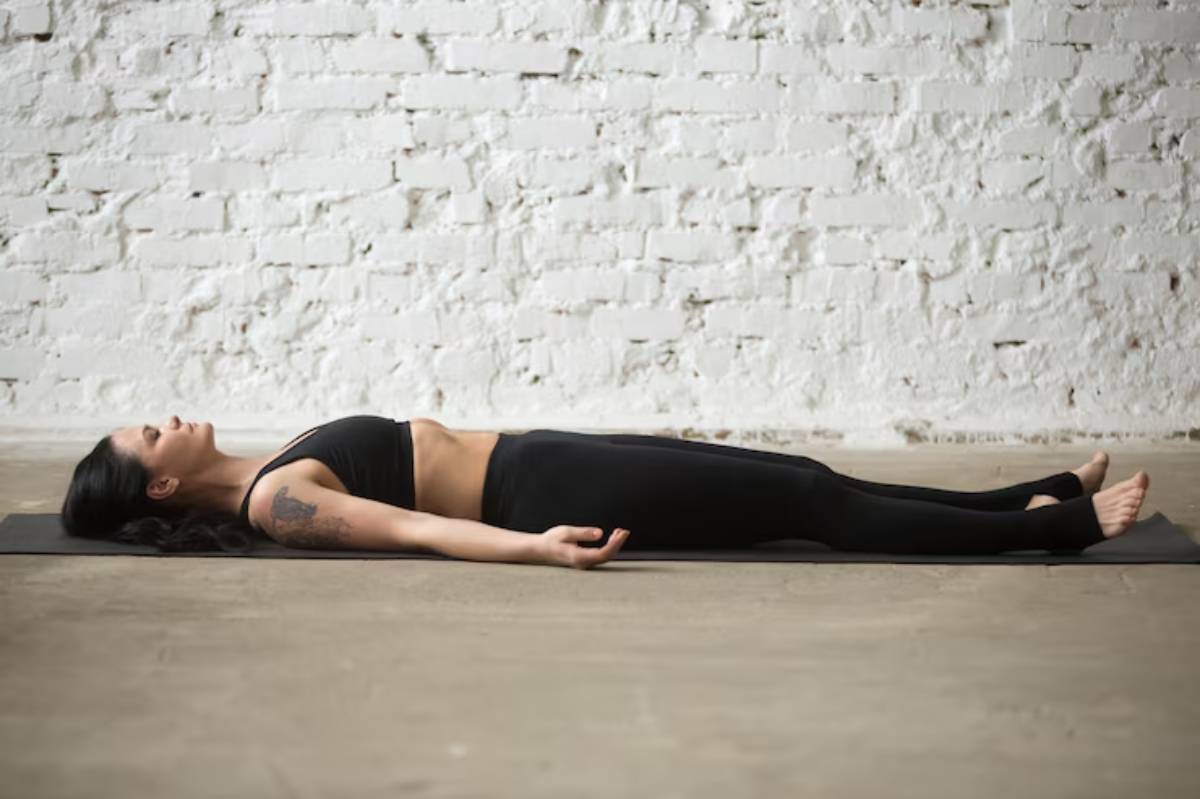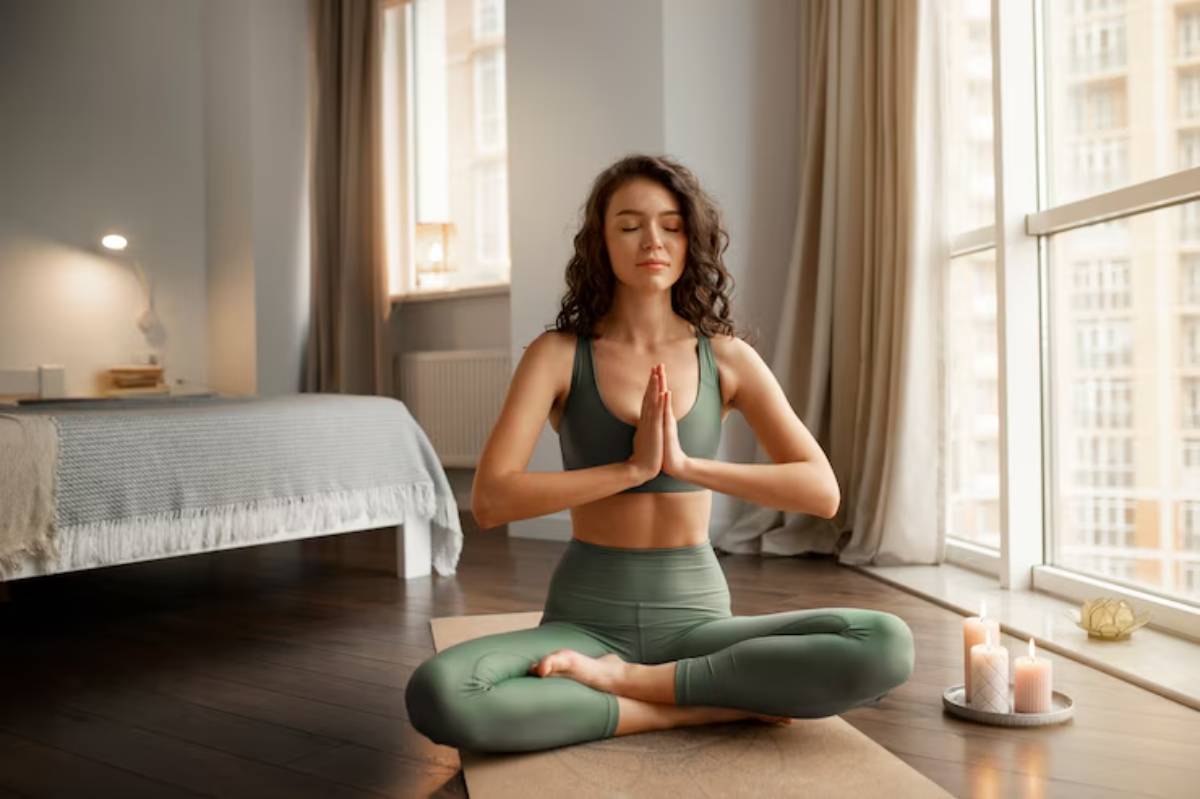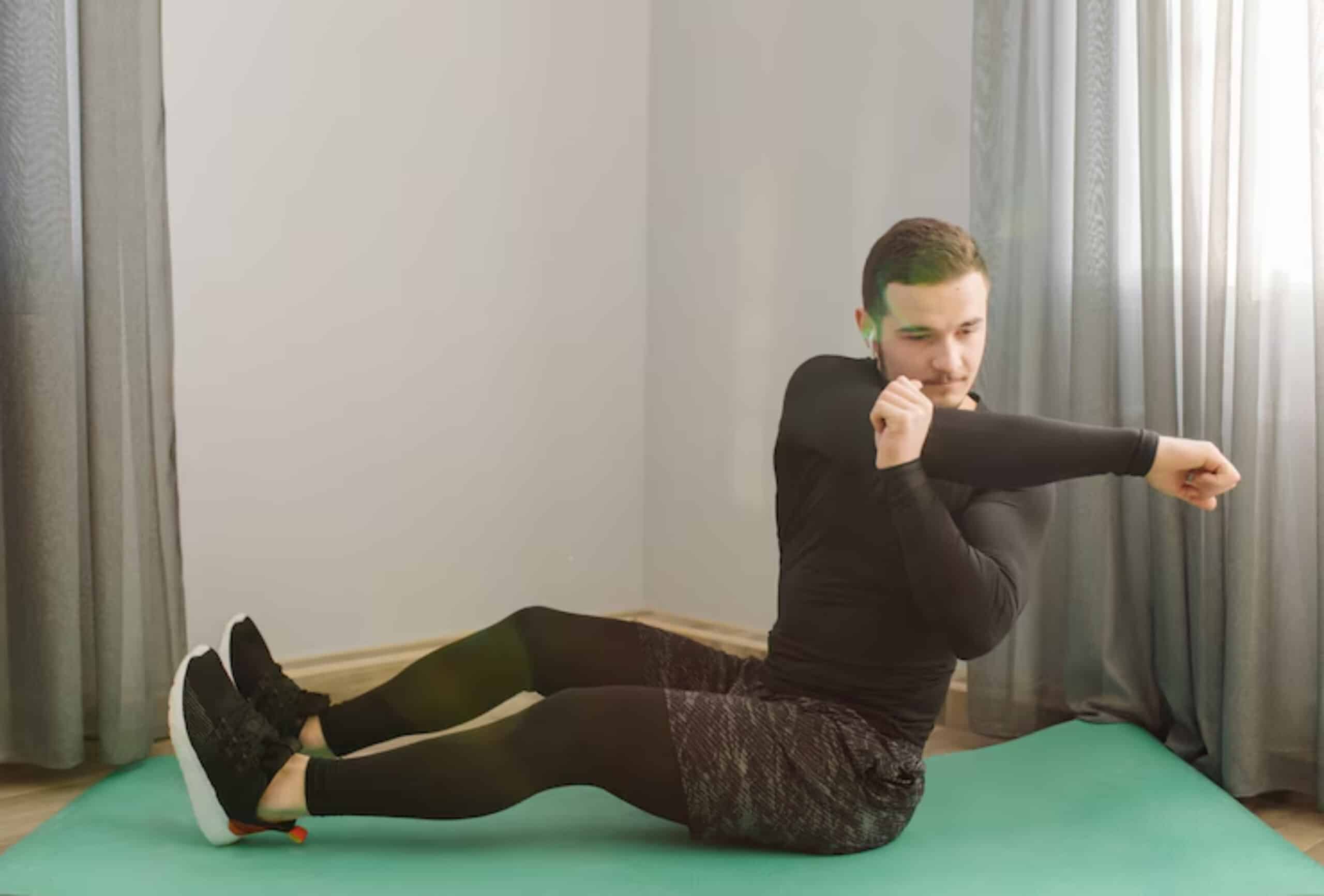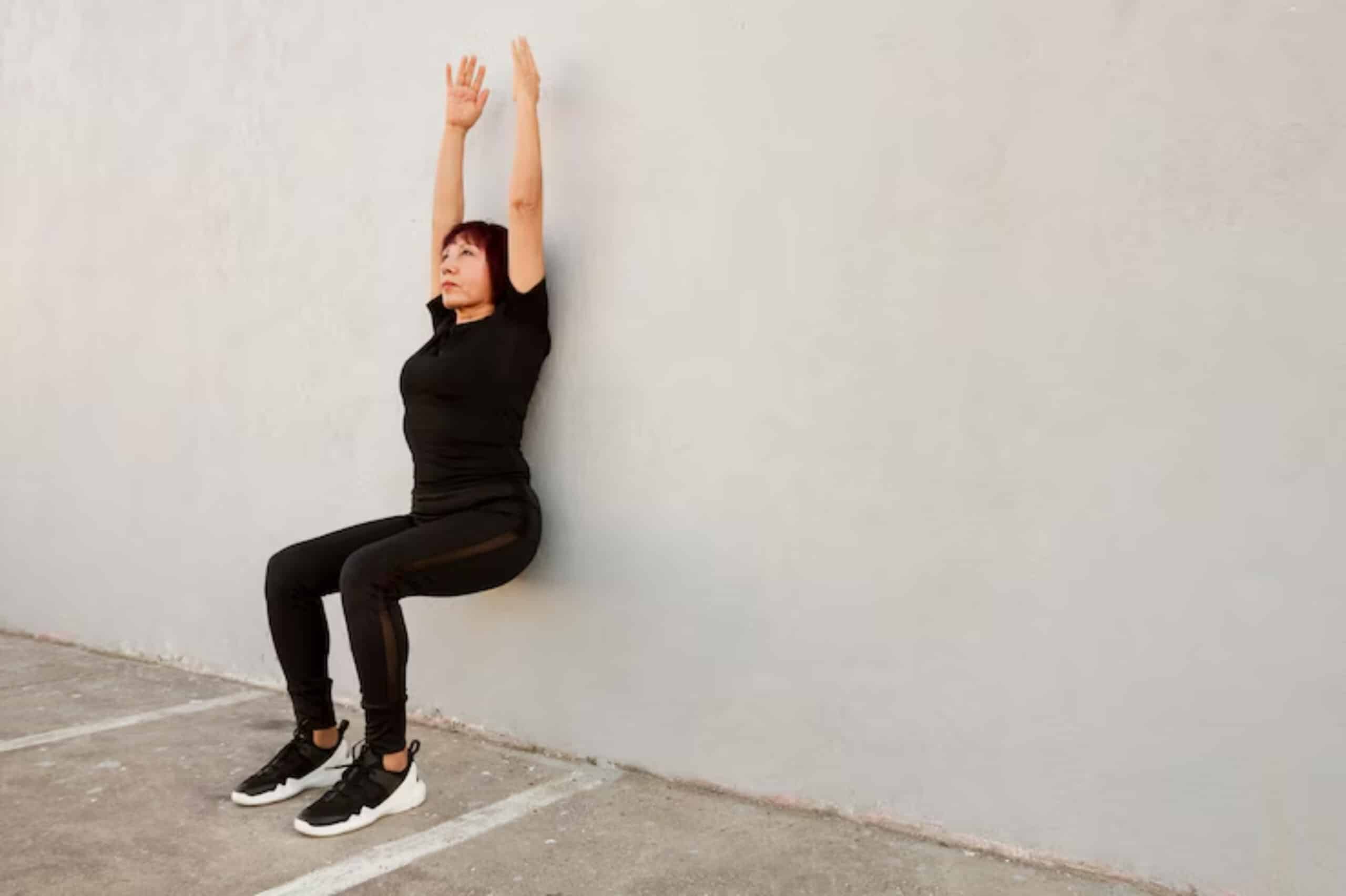
Wall Yoga for Strength and Support
When most people think of yoga, images of mat-based flows, sun salutations, or serene balances may come to mind. Rarely does a flat, vertical surface like a wall enter the picture. Yet this overlooked tool can be a powerful partner in deepening your practice, offering structure, resistance, and a new dimension of feedback that challenges and supports in equal measure.
Wall yoga is not about leaning or slumping against a surface for rest — it’s about awakening new awareness in your poses. By integrating the wall into your sessions, you access real-time alignment cues, reinforce strength-building actions, and discover how small adjustments can lead to significant breakthroughs. Whether you’re navigating injury recovery, seeking more control in balances, or simply refining your technique, the wall becomes a teacher — quiet, firm, and deeply effective.
Let’s step off the mat and onto the wall.
Why Use the Wall in Yoga?
Walls are all around us, yet are often ignored in fitness routines. Yoga thoughtfully uses props like straps, blocks, and bolsters—tools that offer support and facilitate alignment. The wall, however, is one of the most stable and accessible props available. It’s free, it’s in every home or studio, and it doesn’t move.
When used with intention, the wall can:
- Provide sensory feedback to refine posture
- Challenge your muscular engagement in subtle but profound ways
- Encourage full-body integration by showing you where you’re leaning, collapsing, or compensating
- Teach patience and precision through slow, supported movement
Think of it this way: if gravity is always pulling you down, the wall offers a vertical resistance to press into, making it a powerful tool for cultivating active strength and alignment awareness.
Benefits of Wall Yoga
- Improves alignment: The wall acts like a mirror, showing you how your body stacks. If your heels don’t touch in Mountain Pose, or your spine arches too much in a plank, the wall gives immediate, tactile feedback.
- Enhances strength: Many wall poses challenge the body to work against resistance, pushing or pressing into the surface, which activates muscles more deeply than in free space.
- Builds proprioception: Using the wall helps you understand where your limbs are in space. This spatial awareness is vital for safe movement and balanced posture.
- Boosts confidence: For those who fear falling in balances or inversions, the wall offers a sense of safety that reduces hesitation and builds courage.
Slows the practice down. The wall’s structure invites stillness. It encourages you to hold positions longer, allowing for deeper muscular engagement and breath awareness.
Who Benefits Most from Wall Yoga?
Wall yoga is incredibly versatile. While nearly anyone can benefit, certain groups may find particular value:
- Beginners: The wall demystifies alignment. It helps beginners understand how to safely enter and exit poses while maintaining structural integrity.
- Athletes: Adding isometric resistance via the wall can improve joint stability, core control, and muscle endurance, especially valuable for sports requiring balance and functional strength.
- Injury Recovery and Rehabilitation: For those easing back into movement, the wall provides a non-invasive way to engage muscles safely while supporting the joints.
- Older Adults: A wall provides balance support and enhances confidence, making poses like Warrior III or Tree Pose feel more secure.
- Advanced Practitioners: Even seasoned yogis can benefit. Handstands, forearm balances, and deep backbends can all be safely trained or refined against a wall.
Key Supported Strength Poses with the Wall
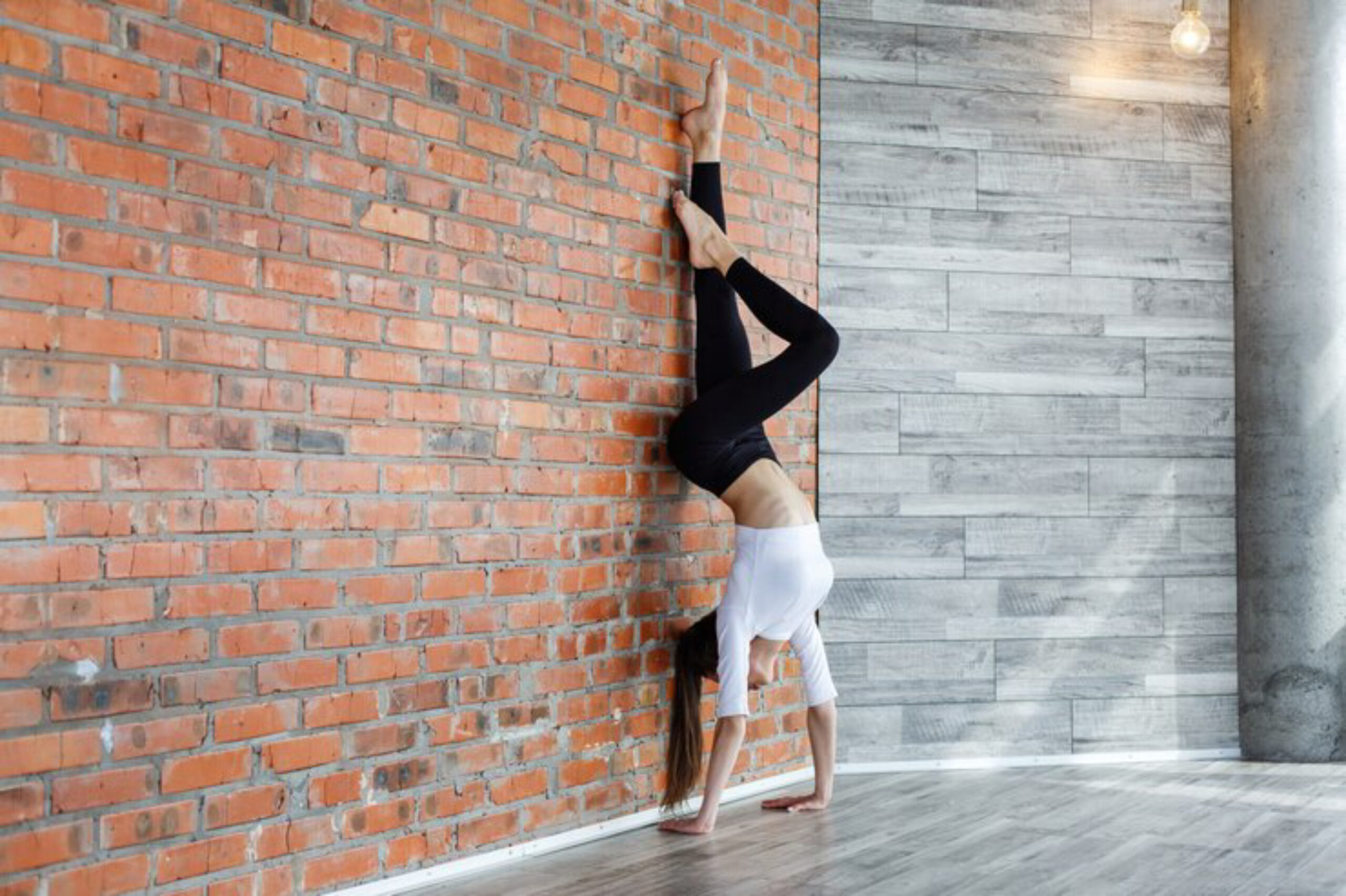
These poses activate major muscle groups while using the wall as a guide or form of resistance.
1. Wall-Assisted Chair Pose
- Setup: Stand with your back flat against the wall. Walk your feet forward and lower into a seated position with your thighs parallel to the floor and knees stacked above the ankles.
- Focus: Engage quads, glutes, and core. Press your lower back into the wall while keeping the shoulders relaxed.
- Why It Works: This is a fantastic lower-body strengthener that also teaches proper squat mechanics and upright posture.
2. Wall Plank
- Setup: Face the wall and place your hands at shoulder height. Step back until your body forms a diagonal line from head to heels.
- Focus: Push actively into the wall, engaging shoulders, core, and legs. Maintain a long spine.
- Progression: Elevate the feet or move into a one-arm variation to build intensity.
- Why It Works: Builds core integrity and upper body strength without wrist compression.
3. Lunge with Back Foot on Wall
- Setup: Place one foot on the wall behind you, toes pointed. Step the other foot forward into a deep lunge.
- Focus: Keep the front knee aligned over the ankle. Engage glutes and thighs.
- Why It Works: This variation increases activation in the rear leg and teaches active hip extension, critical for running, squatting, and lunging.
4. Supported Warrior III
- Setup: Face the wall and place your hands shoulder-width on it. Hinge forward with one leg extended back parallel to the floor.
- Focus: Square the hips, draw the belly in, and push into the wall for stability.
- Why It Works: Enhances single-leg balance while building strength through the glutes, hamstrings, and spinal stabilisers.
5. Wall Handstand or L-Stand
- Setup: Place hands on the floor with your feet climbing or kicking up the wall.
- Focus: Build shoulder strength and body awareness. Keep the core engaged and shoulders stacked over wrists.
- Why It Works: Trains inversions safely and gradually, allowing for progress without fear of falling.
6. Wall Glute Bridge
- Setup: Lie on your back with feet on the wall, knees bent at 90 degrees.
- Focus: Press into the heels, lift the hips, and squeeze glutes at the top.
- Why It Works: Isolates and strengthens the posterior chain, crucial for posture and lower back health.
7. Wall-Assisted Side Plank
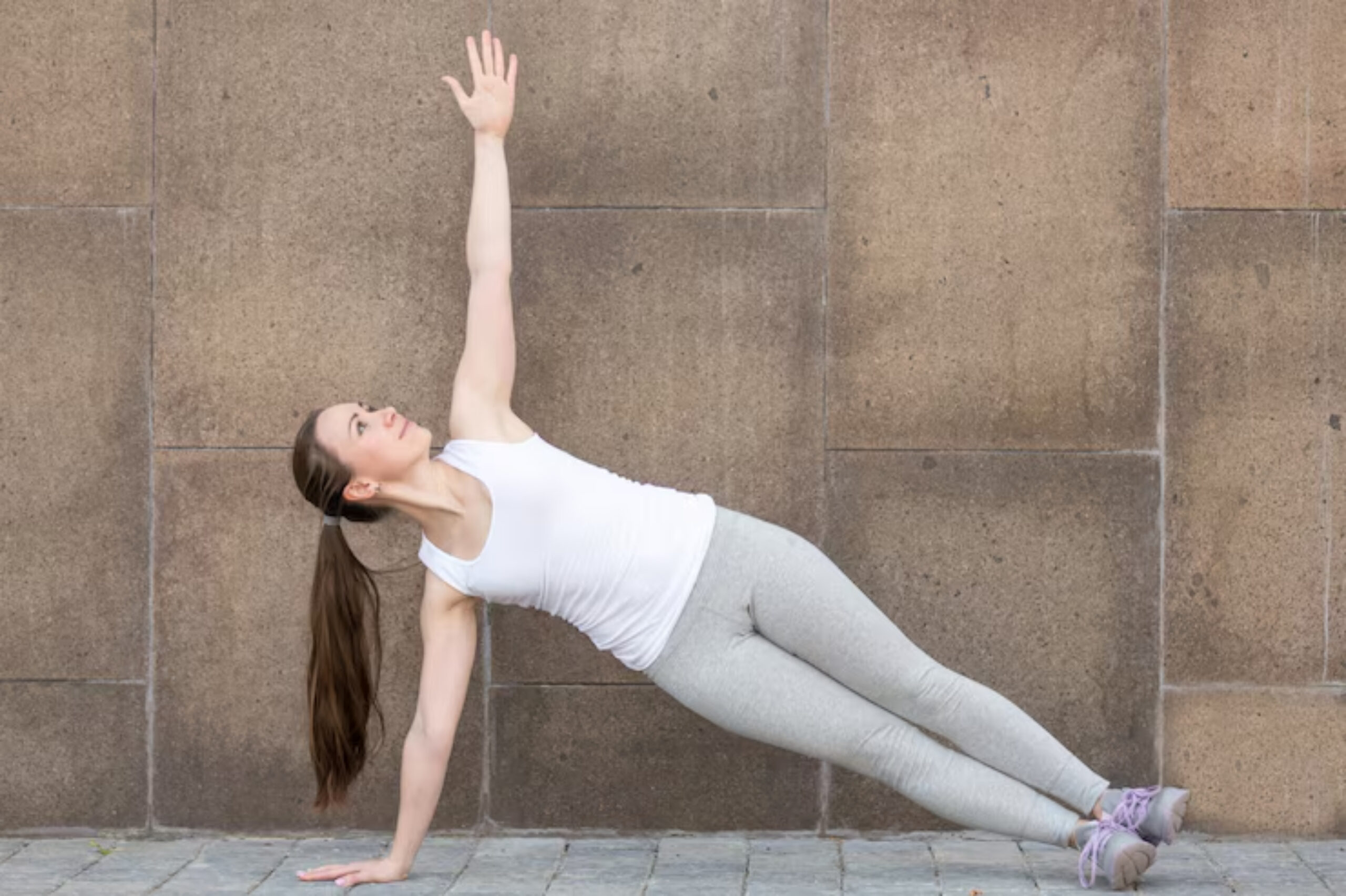
- Setup: Enter a side plank with your back gently touching the wall.
- Focus: Keep hips lifted and spine long, using the wall to cue alignment.
- Why It Works: Encourages vertical body stacking and removes the guesswork from correct form.
Curious about building full-body control? Try this alongside Plank-Based Yoga Sequences for Core Power.
Sample 30-Minute Wall Yoga Workout
Warm-Up (5 Minutes)
- Cat-Cow near Wall: Use the wall to support your hands or pelvis as you articulate the spine.
- Seated Forward Fold: Sit with your back against the wall for support, lengthening the spine and hamstrings.
- Wall Arm Circles: Stand with back and arms against the wall; move arms in slow circles to open shoulders.
Strength Flow (20 Minutes)
- Wall Chair Pose – Hold for 30–45 seconds
- Lunge with Back Foot on Wall – 5 slow breaths per side
- Supported Warrior III – 30 seconds per leg
- Wall Glute Bridge – 10 controlled reps
- Wall Plank Hold – 45 seconds
- L-Stand or Handstand Prep – 15–30 seconds
Cooldown (5 Minutes)
- Legs-Up-the-Wall: Lie down and extend legs up the wall. Encourages circulation and nervous system reset.
- Supine Twist with Hips Near Wall: Gently open through the back and side body.
- Child’s Pose with Hands Pressing into Wall: Releases shoulders and promotes grounding.
Personal Story: Alex’s Wall Breakthrough
Alex, a 42-year-old office worker, once felt self-conscious in balance-heavy yoga classes. “I’d wobble, lose focus, and leave class frustrated,” they say. When a teacher introduced wall-supported Warrior III, things clicked. “I realised I’d been muscling through without awareness. The wall helped me slow down, feel my core, and trust my balance.”
Over time, Alex transitioned to unsupported balances — but still uses the wall as a training tool for new poses. “It’s not a fallback; it’s part of how I progress with purpose.”
Common Mistakes in Wall Yoga
- Overusing the wall: The wall is a tool, not a crutch. Use it to inform, not replace, your strength.
- Losing breath awareness: Always breathe deeply and consciously — it anchors your effort.
- Collapsing into support: Stay engaged, even when supported. Don’t let the wall carry all the work.
- Ignoring alignment cues: If your body leans or shifts away from the wall, that’s a signal, not something to ignore.
A good rule of thumb is to let the wall provide up to 30% support. You bring the remaining 70% through muscle activation and focus.
How to Integrate Wall Yoga into Your Week
Wall yoga doesn’t need to dominate your schedule. It can complement other yoga or strength practices.
- Morning Mobility: Do 5–10 minutes of wall-based movements like Cat-Cow, Chair, or Shoulder Rolls.
- Strength Day: Replace your regular bodyweight workout with a wall yoga circuit to build functional control.
- Evening Wind-Down: Poses like Legs-Up-the-Wall or Wall Child’s Pose help soothe the nervous system.
Want to mix and match? Consider alternating days of mat-based flow with wall-supported strength sessions for holistic balance.
Need to balance your week further? Visit How to Structure Your Week With Yoga and Strength Workouts
Final Thoughts: Lean In to Lift Up
The wall is more than a boundary — it’s a springboard for strength, mindfulness, and physical precision. By inviting this simple structure into your practice, you redefine what support looks like. You learn that balance isn’t about perfection, but about awareness and engagement.
You don’t need fancy props or a yoga studio to get started. All you need is a wall, your body, and a commitment to show up.
